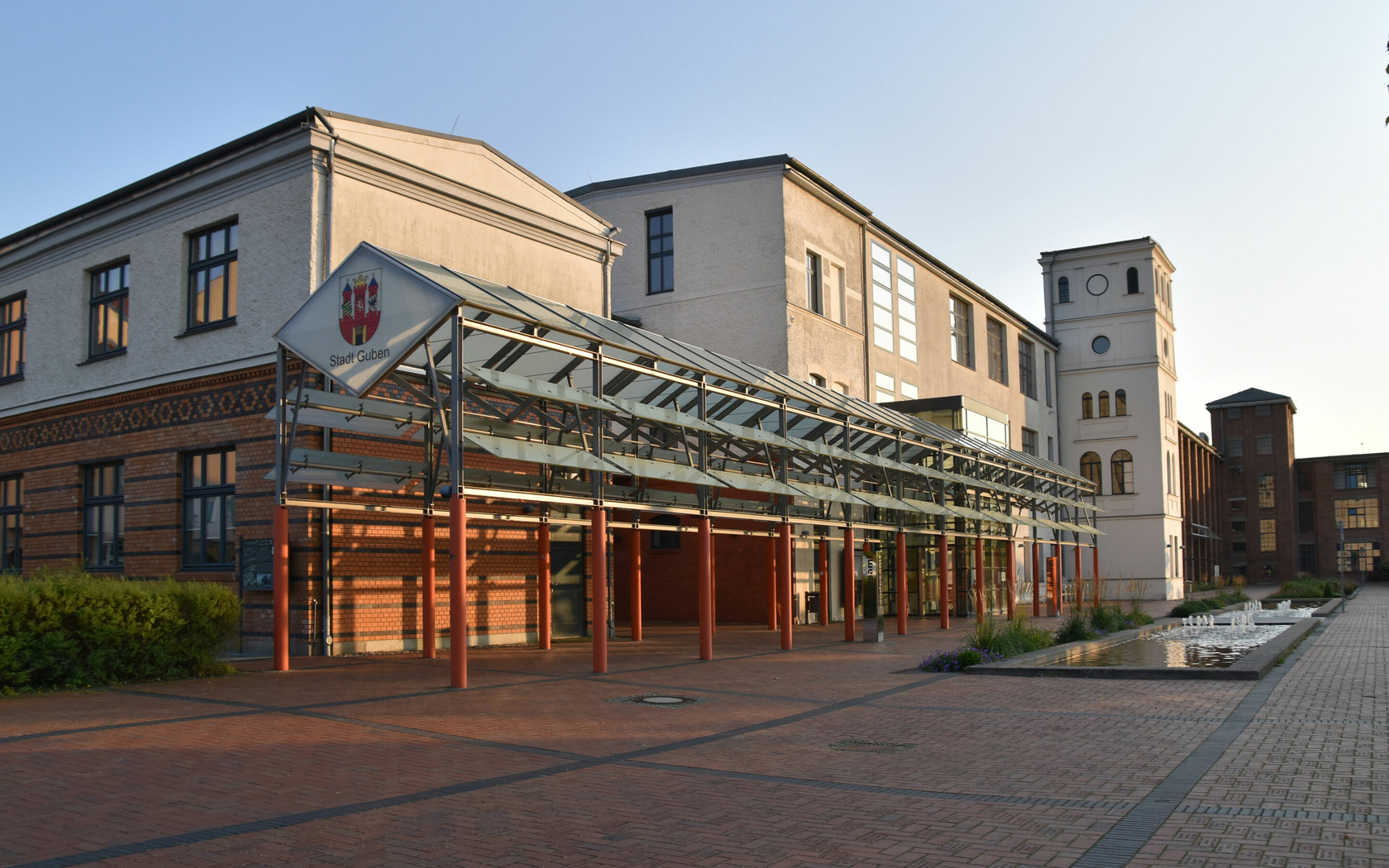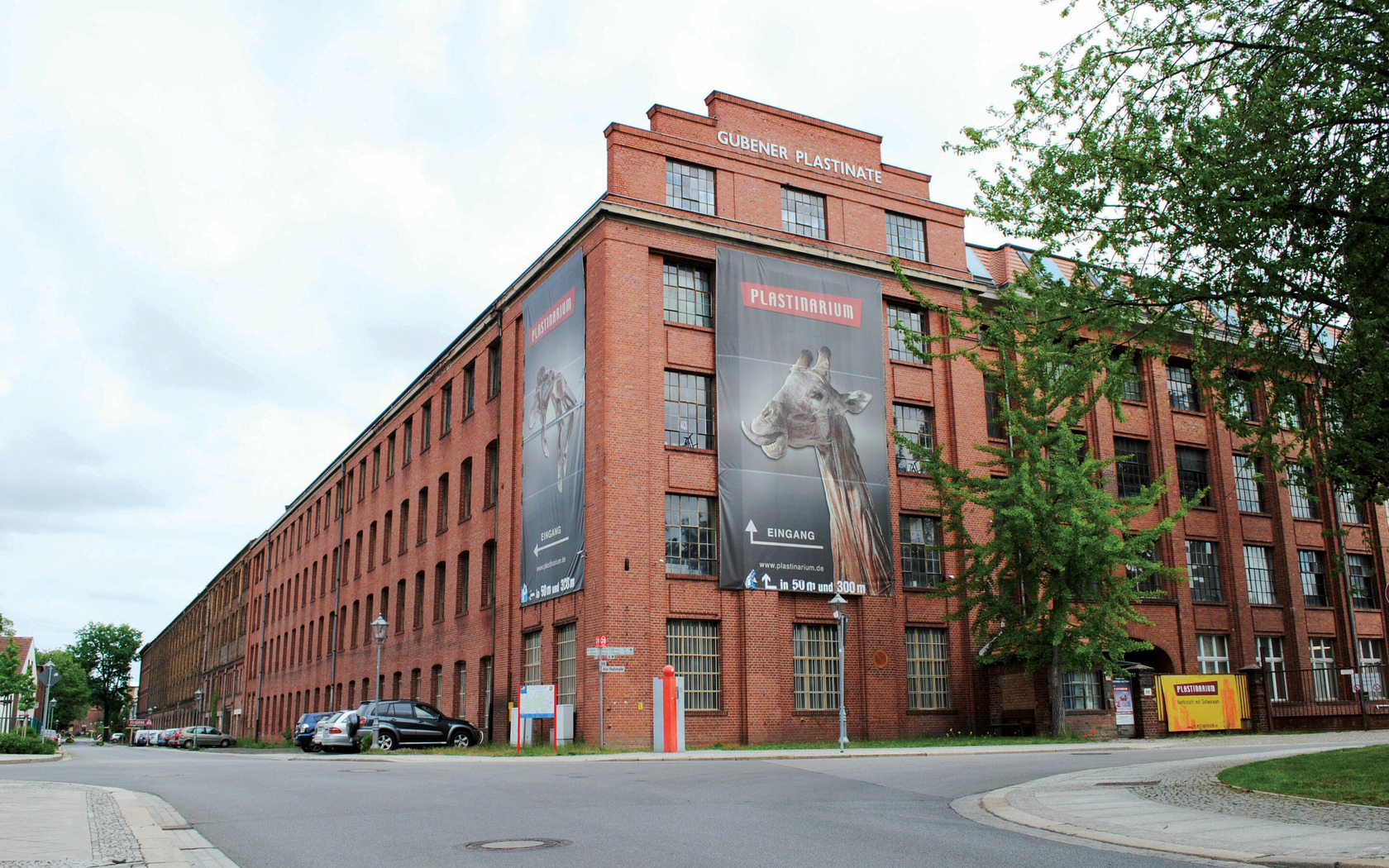On the traces of the industrial history of Guben
Raise your hat! This tour takes the guest on the traces of the hat-making family Wilke and also of Mies van der Rohe. You can also learn something about the human anatomy in the Plastinarium. They all are very important in Guben (or: 'have the hat on' as the German saying goes). The many proverbs and sayings that exist around the hat bear witness to the importance of that indispensable headwear in those days. Half a century ago, no man left home without a hat with a fixed brim. In the 1920s, about 7000 employees in Guben manufactured up to ten million hats, which were exported all over the world. Guben, one of the oldest towns in Lower Lusatia, lies directly on the border with Poland. The town on the Neisse River looks back on an eventful history: In the 14th century, the first heyday was characterised by wine and fruit cultivation, cloth making, Neisse shipping and long-distance trade. Afterwards, Guben developed into a globally renowned hat-making and industrial town. The Second World War was followed by destruction and the division into the German Guben and the Polish Gubin. Since then, the historic old town has been on the Polish side and the industrial part on the German side. As a result of the post-war upswing, an important branch of industry developed in Guben – the production of chemical fibres. The hats produced in Guben were famous all over the world, especially the Vigu Hat made of polyvinyl chloride (PVC). With the change of the political system at the beginning of the 1990s, Guben's economy suffered its collapse. The chemical fibre production remained, but the cloth and hat-making industry is part of Guben's history.
Opening times
Die Öffnungszeiten entnehmen Sie bitte der Webseite des Anbieters.
Diese Karte kann nicht von Google Maps geladen werden, da Sie in den Datenschutz- und Cookie-Einstellungen externen Inhalten nicht zugestimmt haben.


